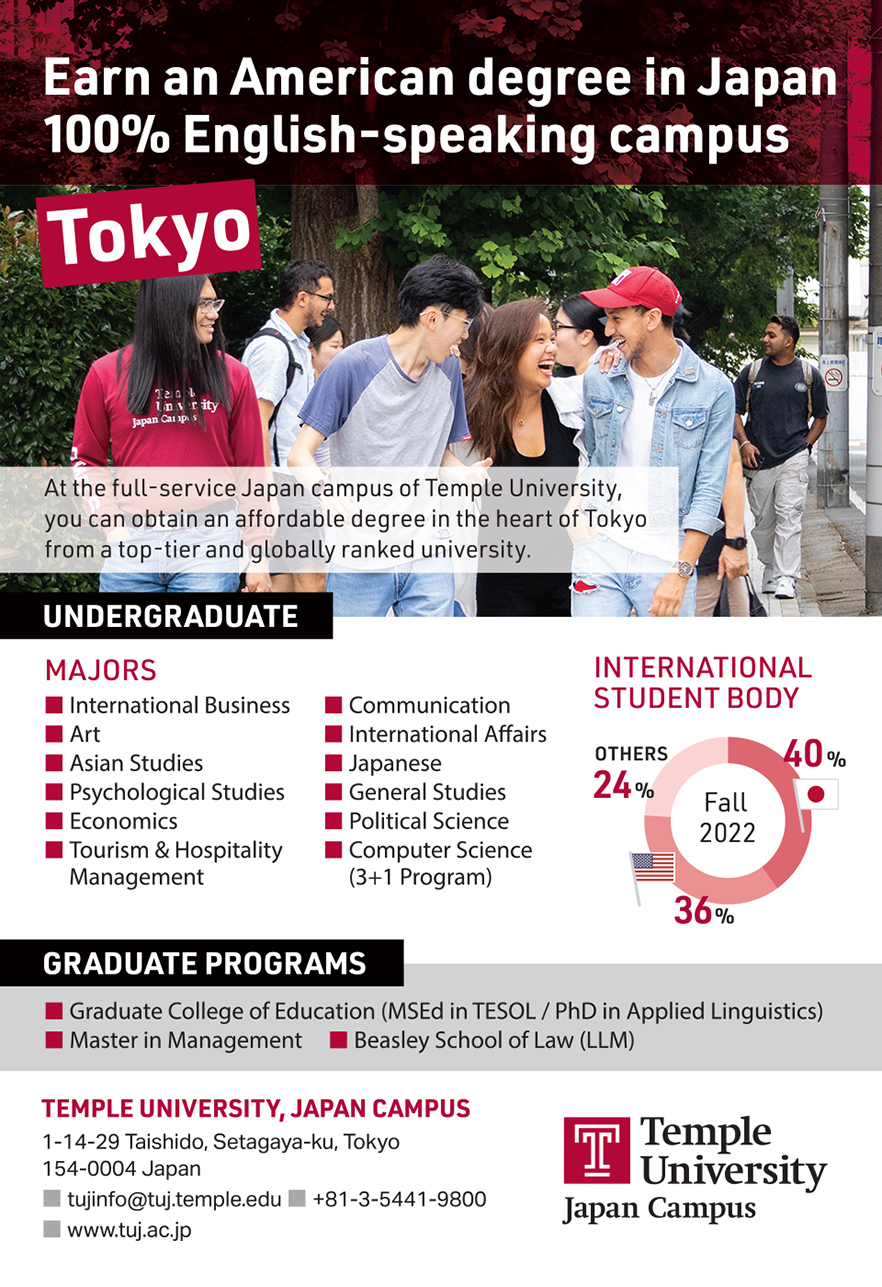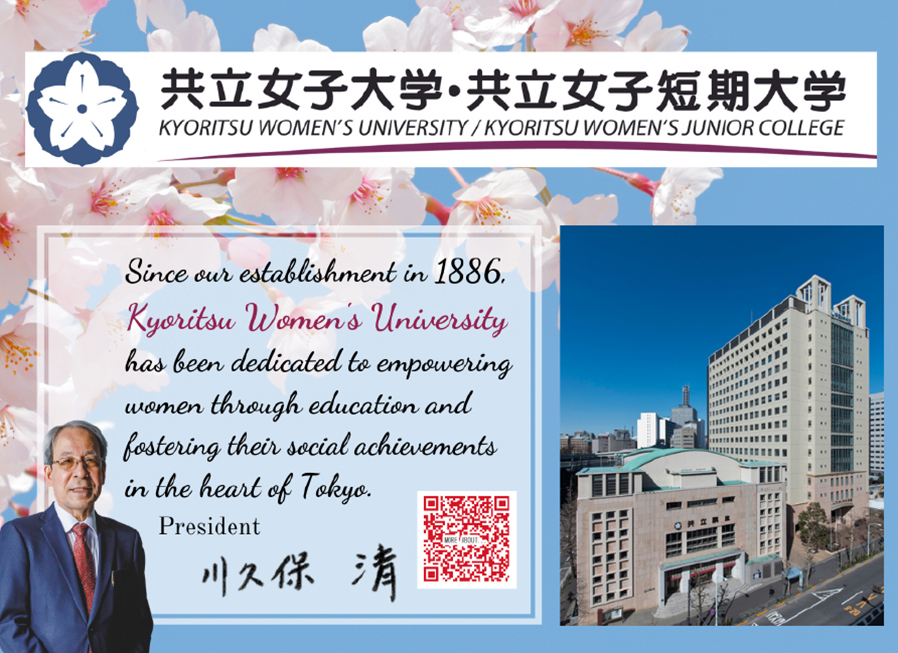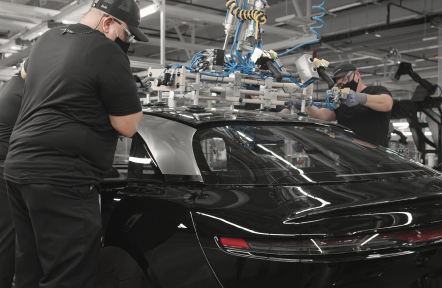A nation respectful of centuries-old traditions, Japan is also the well-spring of the world’s future. The high-speed train, the Walkman and humanoid robots are just a few Japanese inventions that have transformed the lives of people across this planet.
This small nation achieved its prowess in technological innovation because of its unwavering commitment to improving its education system.
Recognizing that its schools must evolve to thrive in a rapidly changing world, the government headed by Prime Minister Fumio Kishida contributes heavily to research and development and promotes increased internationalization, all in support of the Society 5.0 concept.
These efforts hope to strengthen Japan’s education system and equip the country and the rest of the world with the right tools and technology for the post-Information Age, or Society 4.0.
Bringing down boundaries
In recent years, Japanese schools have recognized the need to welcome more international students. Business issues aside, such as increased enrollment, colleges and universities in Japan know that students will benefit more in an environment that is more inclusive and culturally diverse.
Eliminating the language barrier that turned away many interested applicants, more Japanese universities are providing programs and courses taught entirely in English. With its unique culture, Japan has become an even more attractive destination for international students pursuing world-class education.
Apart from gaining a wider perspective and learning about different problems around the globe, students also build relationships that can lead to life-long global networks after graduation and perhaps spark useful partnerships in the future.
Among those cross-cultural bridges is Temple University. Based in Philadelphia, the American university is ranked among the top 100 in the country by U.S. News & World Report and was the first to establish a campus in Japan in 1982. At the time, Temple University provided Japanese students with an opportunity to learn English and become English language teachers.
Today, Temple University Japan has more than 2,000 students enrolled in degree programs both undergraduate and graduate (education, management, and law), and another 2,000-plus in non-degree programs.
“The Japan campus provides a unique opportunity for exploration, investment and education in an area that is affordable and safe, and in a country that is dynamic and truly values education as well. We’re very fortunate to have been able to navigate the obstacles and challenges in the Japanese market to provide cutting-edge, world-class education. Our mission is to help elevate international education in Japan,” said Temple University Japan Campus President and Dean Matthew Wilson.
The birthplace of tomorrow
The core strength of Japan’s education system is its enduring commitment to research and development. In pursuit of innovative solutions to the most pressing problems facing society, Japanese universities have pushed the boundaries of knowledge across various disciplines, from technology to healthcare, thanks to close partnerships with government, industry and other educational institutions.
The Kyoto College of Graduate Studies for Informatics (kcg.edu) embodies Japan’s renowned innovative spirit. As an IT professional graduate school, borne out of the country’s first computer education institution, Kyoto Computer Gakuin (KCG), it remains faithful to its mission to provide world-leading computer education.
Recognizing that skilled information technology specialists will remain in high demand as the digital economy develops rapidly, the institution educates the next generation of applied IT specialists who will develop new advancements in their field, locally and globally.
“Our founding philosophy to provide cutting-edge computer education has required what we call ‘technological courage.’ We’ve invested in upgrading our computer facilities with bigger screens, cameras and a projector during the pandemic to better conduct hybrid classes. Teachers can interact with students either face-to-face or online. I think we coped well during the difficult time,” said The Kyoto College of Graduate Studies for Informatics Rector and Chairman Wataru Hasegawa.
KCG Group Chief Academic Officer Prof. Sanford Gold, who teaches in the college, added: “We’re bringing in world-leading technologies because we want to have an instructional edge. Our goal is to bring synergy to the field of IT so our students can work in Japan, abroad or go back home to apply what they’ve learned.”
Meanwhile, Nagoya City University is pushing the boundaries in AI and data science through pioneering research, interdisciplinary collaboration, and the development of its students and faculty.
“AI and science engineering are rapidly developing right now. These fields have contributed to leading solutions to social issues and help in government policy-making. We have been developing and strengthening this field, which is why we opened our faculty for data science,” said Nagoya City University President Kiyofumi Asai.
As platforms for collaboration in research and as incubators of innovation, Japan’s universities have emerged as leaders in fields such as robotics and artificial intelligence. Their output has the potential to improve the lives of billions of people and bring about a sustainable future.
Advancing a more humane society
The concept of Society 5.0 lays out a future where technology is harnessed to create a human-centered society. By integrating the breakthroughs of the Information Age, like Big Data, the Internet of Things, and Artificial Intelligence, Japan hopes to create an environment where technology serves its citizens in the essential aspects of their lives, including health care, transportation, and urban planning.
Universities play a pivotal role in realizing this vision through research and collaboration with industries and government agencies, both national and local, to develop solutions that improve efficiency, sustainability, and the overall well-being of citizens. If this transformational project is to succeed, the humans behind the technology must likewise be well-developed.
Tracing its origins to 1886 as the Kyoritsu Women’s Educational Institution, Kyoritsu Women’s University was established in 1949 and has remained committed to educating and empowering women as valuable members of society from the post-war period to the present day.
“The founding spirit of our institution is promoting independence and self-reliance of women. We put an emphasis on hands-on education and leadership, starting with the Faculty of Home Economics and growing into the comprehensive university we are today. Recently, we are actively fostering the full potential of our students’ leadership with global perspectives,” said Kyoritsu Women’s University President Kiyoshi Kawakubo.
In the context of Society 5.0, Kyoritsu Women’s University sees itself playing a pivotal role by expanding its curriculum and equipping its students with the knowledge, skills, and a critical mindset that will allow them to succeed in a rapidly evolving world.
Located in central Tokyo, Kyoritsu Women’s University has six faculties offering bachelor degrees: Home Economics, Arts and Letters, International Studies, Nursing, Business Studies, and Architecture and Design. Associate degrees are offered by two departments: the Science of Living and Language and Literature. Graduate programs are offered in Home Economics, Arts and Letters, International Studies, and Nursing Studies.
Another institution dedicated to narrowing the gender gap is Toyo University. Through various initiatives, the Tokyo-based university has achieved a ratio of 30.0% female faculty members and 54.7% female administration staff as of May 2023.
“We aim to nurture students who can think things through deeply, design their own way of life, and live with high ethical standards,” said Toyo University President Etsuko Yaguchi.
(Editor’s Note: The last two paragraphs of this article differ from those in the printed version in the November/December 2023 issue of Foreign Affairs. This updated version adds a quote from the Toyo University president and explains the university’s specific achievements in raising the ratio of its female faculty members and staff.)















